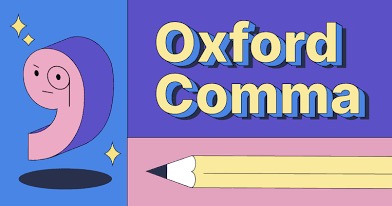There are many different writing styles (five major ones to be exact) each with their own set of guidelines. For example, newspaper articles, much like this one, are written in AP style. Each style contains hundreds of grammatical rules, down to what one might consider the smallest of things, such as commas.
There are several distinct types of commas, the Oxford comma being one of them. This comma is used before a conjunction in a list of three or more items, providing clarification and preventing ambiguity. One might assume that all writing styles use the Oxford comma; however, according to the AP style guidelines, a comma should not be put before the conjunction in most simple series.
So where exactly did this comma come from? The first comma ever was introduced by a 15th century Italian printer, Aldus Manutius. Skip a few centuries and the Oxford comma is officially introduced by Horace Hart, a printer and controller of the Oxford University Press, in 1905. However, it was not referred to as the Oxford comma until Peter Sutcliff referred to it as such in his book about the history of the Oxford University Press.
Since its introduction into the literary world, the Oxford comma has remained controversial among writing formats. While some are completely against it and some all for it, certain writing systems call for it to be used only when the sentence may be confusing without it. The AP style makes their stance clear; they do not agree with the use of this comma.
Personally, I disagree with this aspect of AP style guidelines. Those against the Oxford comma argue that it slows down a sentence or paragraph. For example, one might argue that the comma before “and” is unnecessary in the sentence below:
“Tom bought apples, oranges, and pears.”
Omitting the second comma is unlikely to cause any confusion in this sentence, however there are other sentences where the Oxford comma can help avoid any confusion. For example:
“We invited our grumpy neighbors, Jan and Ted.”
Without the Oxford comma, it can be assumed that the subject is referring to Jan and Ted as the grouchy neighbors. However, if that is not the case, adding a comma would clarify:
“We invited our grumpy neighbors, Jan, and Ted.”
Without the Oxford comma, the only way to separate the three items would be to rearrange the entire sentence, into something such as:
“We invited Jan and Ted, as well as our grouchy neighbors.”
I think this makes the sentence feel a bit too wordy and therefore would be better left arranged the way it was with the use of an Oxford comma. However, that is only my opinion, and overall, it is up to the writer whether to use an Oxford comma, unless otherwise directed by a style guide.









